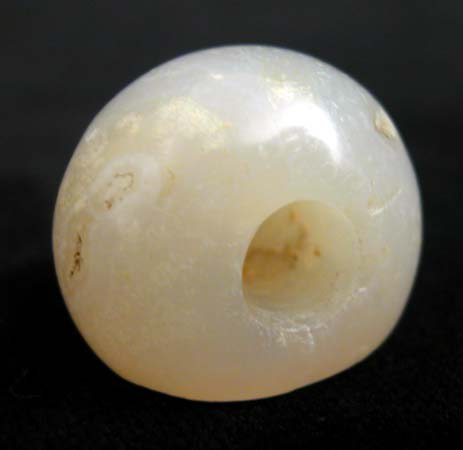Sassanian Agate Seal Depicting a Bird, 200 CE - 600 CE
Agate
0.75 x 0.875 x 0.75
FJ.4236
In 244 A.D., Ardeshir I founded the Sassanid Dynasty, the last native Persian Kingdom to rule Ancient Iran before the Islamic conquest. The Sassanid era was a golden age of...
In 244 A.D., Ardeshir I founded the Sassanid Dynasty, the last native Persian Kingdom to rule Ancient Iran before the Islamic conquest. The Sassanid era was a golden age of Persian culture that witnessed the revival of Zoroastrianism, an ancient mystical religion native to these lands, and a literary Renaissance spurred by the translation of many Old Persian epics recorded in cuneiform into the Middle Persian language of Pahlavi written in an alphabet derived from Aramaic. By introducing heightened international trade and commerce they created a legacy of political and economic diplomacy. They sponsored trade with the Romans (later on the Byzantines), their archenemy, to the west and the Chinese to the east. Excavations in China have unearthed gold and silver Sassanid coins covering a span of many centuries until the demise of the Empire during the reign of Khosrow II. However, the fall of the Empire had already started with a series of wars waged under the rule of Khosrow I, the father of Khosrow II. Challenged by the intensification of the same international commerce that had bore such wealth, struggles for national power and international prestige had escalated to an ungovernable degree. In the face of threats to his royal house, Khosrow II embarked upon military campaigns that would prove unsuccessful. By the close of his reign, the once mighty Sassanid Empire came to an end, paving the way for the rise of Islam in the Middle East.
In every great ancient civilization, seals and signets were regarded as powerful symbols. The cylinder seals of Babylon, the scarabs of Egypt, the intaglios of the classical age, were far more than adornment. A seal might stand in proxy for the will of its owner, as mark of political affiliation, as an amulet against ill fortune. This unusual seal dates from the height of the Sassanid empire, a kingdom that stretched from India to the western edges of Asia. Its bird imagery is mysterious: is this a cult icon? A magic sign? The arms of a royal house or name? As we press its pleasing shape into wax or clay, our imagination flies across time to those who made this same gesture long ago.
In every great ancient civilization, seals and signets were regarded as powerful symbols. The cylinder seals of Babylon, the scarabs of Egypt, the intaglios of the classical age, were far more than adornment. A seal might stand in proxy for the will of its owner, as mark of political affiliation, as an amulet against ill fortune. This unusual seal dates from the height of the Sassanid empire, a kingdom that stretched from India to the western edges of Asia. Its bird imagery is mysterious: is this a cult icon? A magic sign? The arms of a royal house or name? As we press its pleasing shape into wax or clay, our imagination flies across time to those who made this same gesture long ago.



